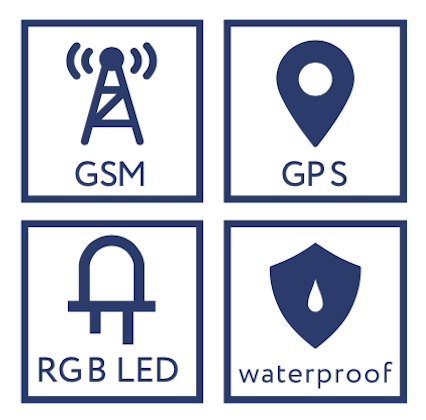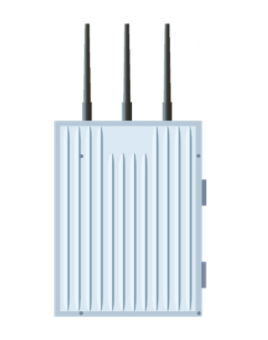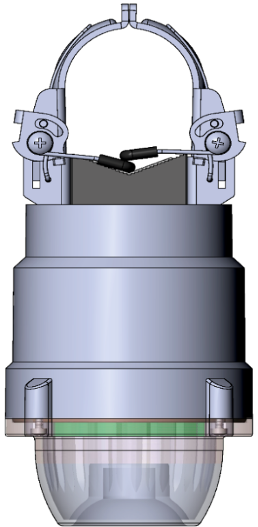Short-Circuit Indicators for overhead power lines SCI-OPL35 Pro T
The short-circuit indicator SCI-OPL35 Pro T continuously measures the parameters of current and voltage, calculates the value of the current amplitude (increase in current above a predetermined level and the appearance of higher harmonics) and voltage at the main frequency of the network and at multiple frequencies. In the event of an emergency on the overhead line, an accident type occurs
and turns on the corresponding LED indication of an emergency (red color – interphase short circuit, blue color – single-phase short circuit), and also turns the orange point of view blender (flag on the indicator) towards the observer.
For integration with the SCADA system, the AMKA-TS communication terminal is supplied with the indicator.
The terminal interacts with the indicators via a radio channel at a frequency of 433 MHz, receives the parameters of the current mode, emergency signals, and through the GSM / GPRS module (it is necessary to install a SIM card inside the terminal case) transmits data to the information collection server with subsequent conversion into the GOST R IEC 60870 protocol-5-104 (National Standard) and transfer to the NCC SCADA system.
The communication terminal also allows you to give information in the form of SMS messages to mobile devices of operational personnel. On the information collection server, the function of memorizing and storing information about registered damages in the amount necessary for operational personnel (25–100 or more accidents) can also be implemented programmatically. Thus, the dispatcher promptly receives information about the type and location of damage to the overhead power line.
The indicator is placed directly on the phase wire with a diameter of 8–24 mm, the AMKA-TS communication terminal is placed on the overhead line support pole.
The indicator is powered from the built-in power supply, from the load current of the overhead line and from sunlight (in standby mode).
SPECIFICATIONS
Voltage class: 6–35 kV;
Line operation mode: dead-end/radial with branches;
Neutral operating mode: isolated, compensated;
Minimum load current: 3A;
Maximum continuous load current: 1000A;
The minimum value of the current increase in the event of a short circuit fault to trigger the register: 3 A;
Visual indication for interphase short circuit or a single-phase ground fault: orange signal flag; 6 LEDs with indication mode depending on the type of damage (red color for interphase short circuit, blue color for single-phase ground fault);
Transfer of information about damage to mobile devices and (or) to the SCADA system: through a communication terminal and an information collection server with conversion to the IEC 60870-5-104 protocol;
Continuous flashing time: up to 2000 hours;
The maximum allowable short-circuit current for thermal stability: 25 kA/500 ms;
Switching to the operating mode from the indication mode: after the expiration of a customizable time interval (from 5 to 40000 sec), after the restoration of the normal operation mode of the overhead line;
Power supply: two independent power circuits on two power sources (Li-ion, Li-Fe) to ensure the operational mode of operation with recharge from solar panels and transformer current of the overhead line load;
Setting the indicator, reading the settings and parameters of the current overhead line mode: via radio at a frequency of 433 MHz via the remote control (optional) at a distance of up to 100 m;
Battery life in standby mode: over 10 years;
Visibility of signals: ≈ 100 meters during the day; ≈ 500 meters at night;
Visual viewing angle during alarm: 360 degrees;
Diameter of high voltage cable: 8–24 mm;
Fastening mechanism: self-locking steel clip;
Product weight: up to 0.8 kg;
Overall size: 80×80×192 mm;
Mounting and dismantling of the indicator: directly on the wire.


